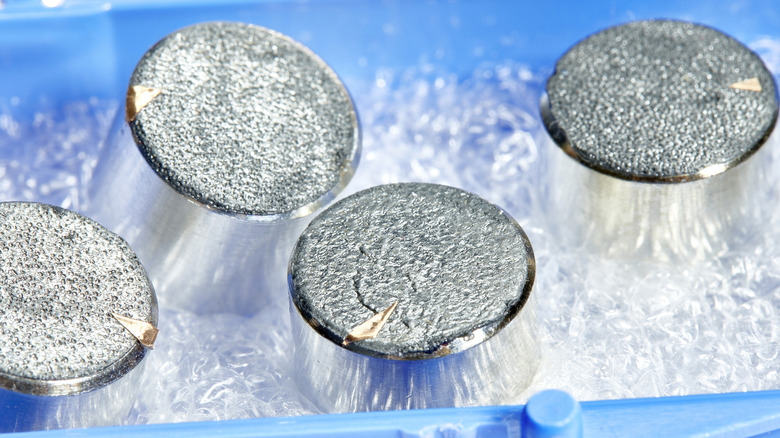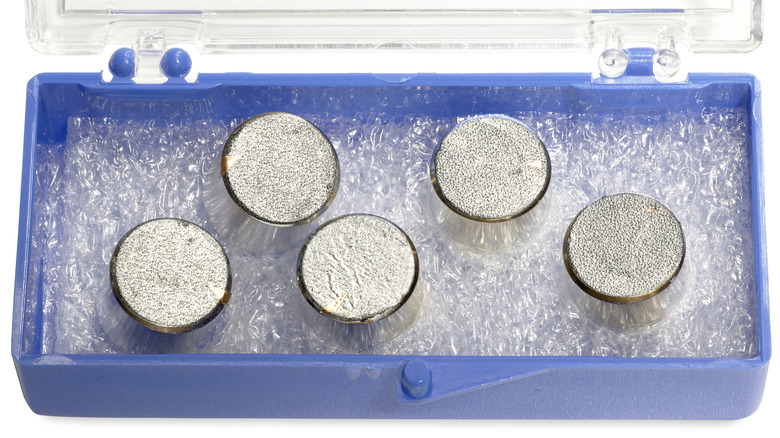The Stunning Amount Of Money Moon Dust From The Apollo 11 Mission Just Sold For
Somebody just spent a lot of money on some space dirt. Bonhams auction house has wrapped up another one of its April 13th, 2022 auctions — this one, in particular, focuses on Space History, full of a lot of historic and space-centric items (hence the name). These include a piece from the Sputnik satellite, a photograph signed by all seven Mercury Seven astronauts, and of course some moon dust that was collected from the lunar surface during NASA's Apollo 11 mission.
According to Bonhams listing, the dust came from the remnants of a "contingency sample" astronaut Niel Armstrong took during the early phases of the historic 1969 mission. The auction wasn't for a bag full of dust, but rather five disks of samples that were taken from what was left on the inside of the original bag used to hold what Armstrong was able to scoop up over 50 years ago — and after NASA had emptied it out.
Despite these samples of lunar material being extremely small in scope, (and really, just the leftovers someone pulled out of an old container with a few pieces of tape), they're still a significant piece of history as well as the only examples of lunar dust that have been verified by NASA and can be sold legally to the public. The lot sold for $504,375, in this case, which includes the 26% buyer's premium Bonhams adds to sales between $25,000 and $1,000,000.
A once-in-a-lifetime purchase
Under most circumstances, these samples wouldn't have been available to the public at all, but Bonhams' listing goes into detail about why this has been an exception.
The samples were originally taken in and studied by NASA, but the mostly empty bag wound up in the hands of the former curator of the Hutchinson, Kansas space museum. Sometime after that, the curator was found guilty of stealing and selling items from the museum's collection, and the bag was confiscated by U.S. marshals, who then auctioned it off to pay for damages.
Once purchased at the auction, the buyer wanted to verify the bag's authenticity and sent it to NASA for verification. This was indeed provided after the dust still remaining on the inside was extracted and tested, but NASA refused to return the bag, claiming it was still their legal property. It wasn't until the bag's buyer pursued litigation that a U.S. district court judge made NASA return the bag and five of the six samples that were pulled from it for verification.
This is all to say that after several misadventures on earth, following centuries of inactivity on the moon, this very specific collection of lunar dust was deemed available for public purchase.

